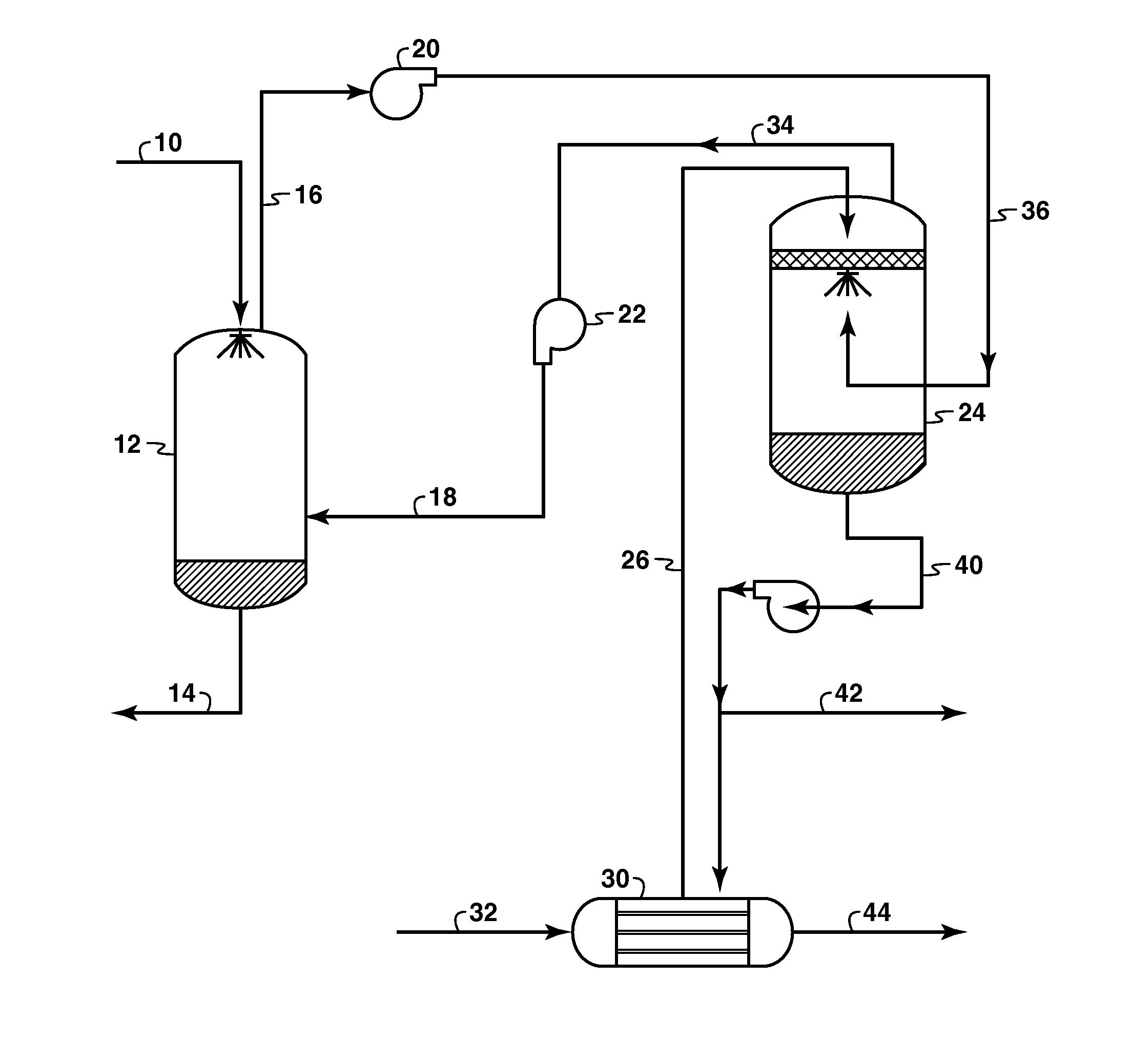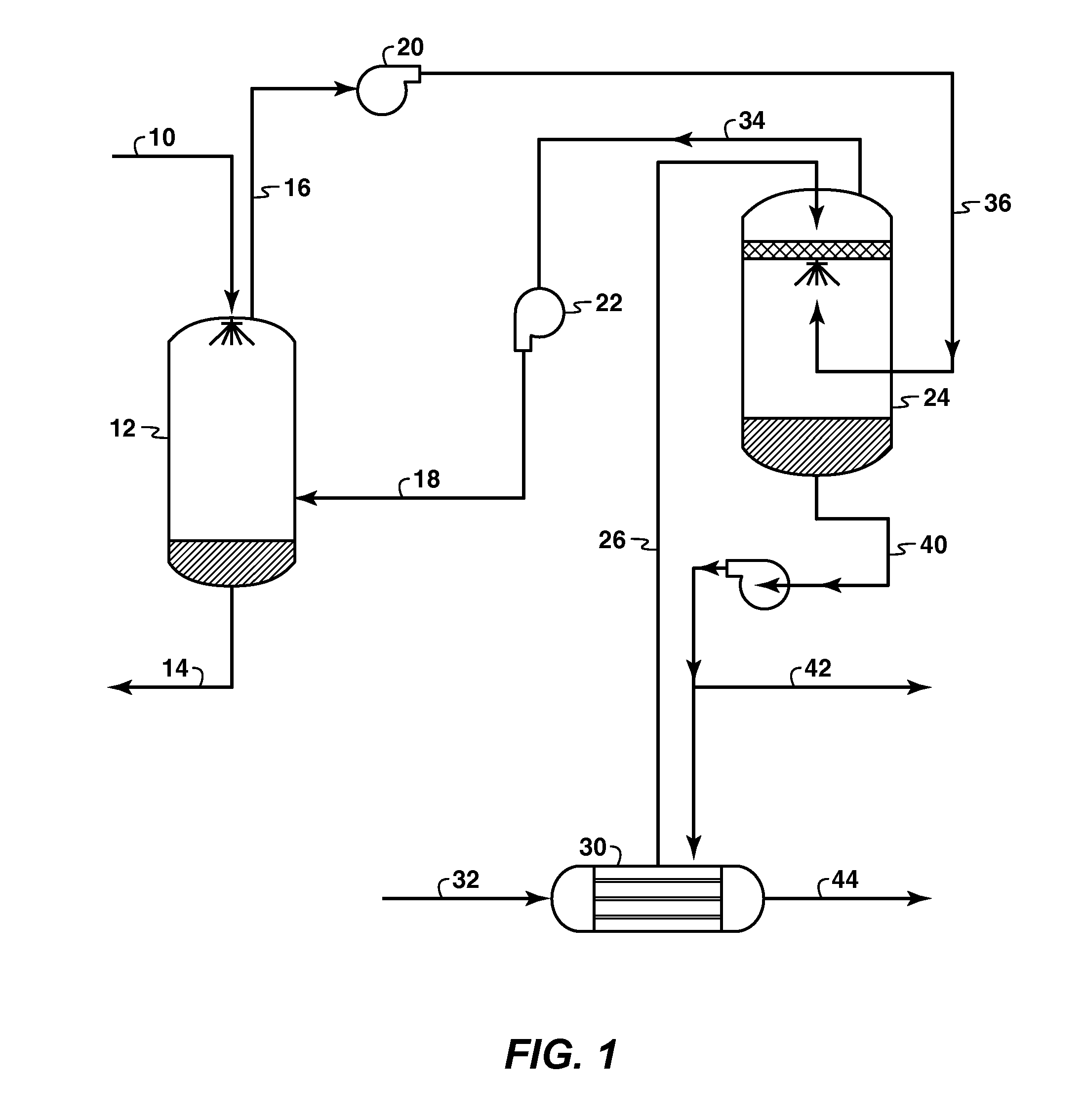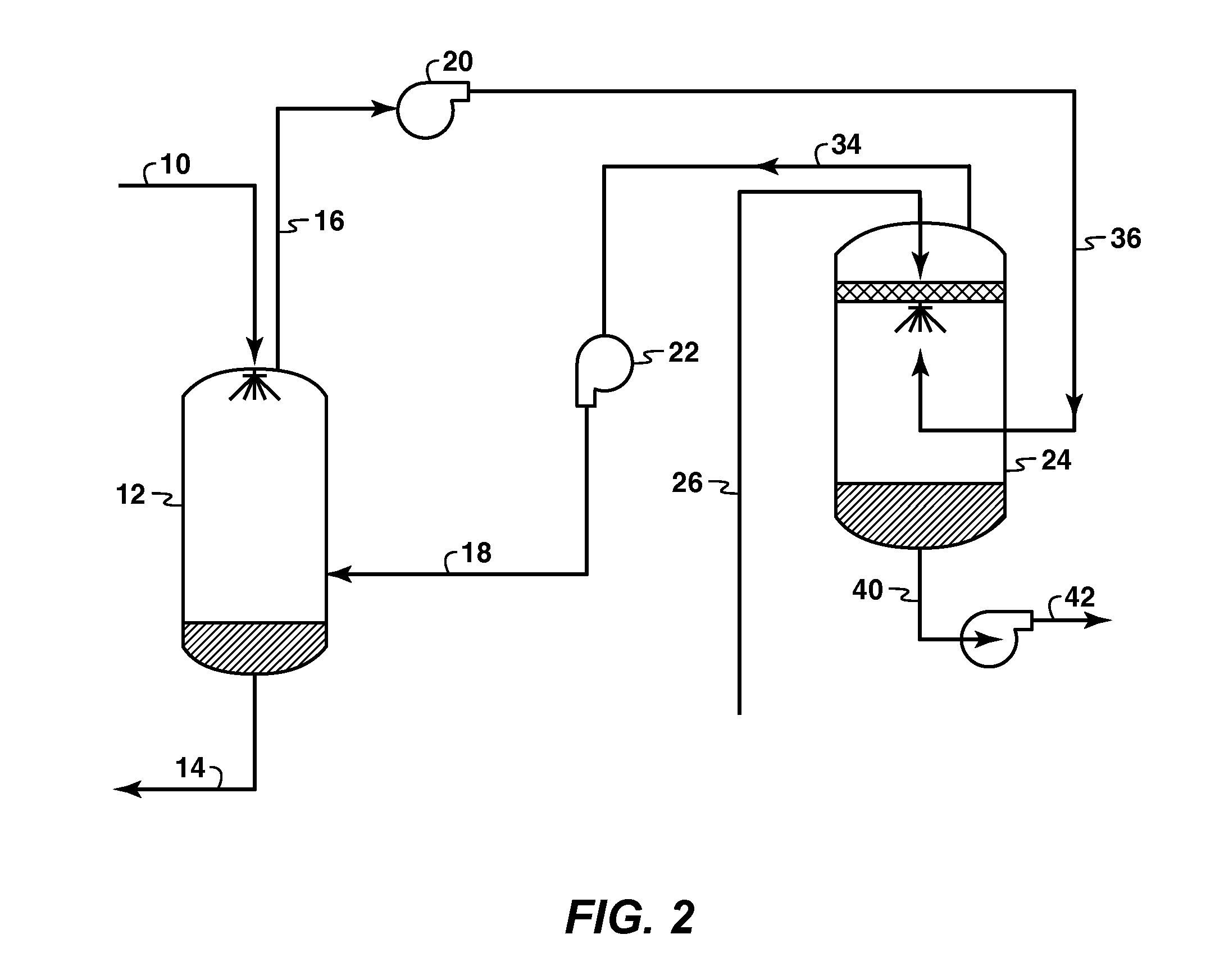Heat and Water Recovery From Tailings Using Gas Humidification/Dehumidification
a technology of gas humidification and tailings, which is applied in the field of system and method of recovering heat and water from oil sands tailings, can solve the problems of increasing transportation and processing costs, releasing residual heat into the atmosphere, and large volume of waste requiring disposal, so as to reduce the amount of energy required, reduce energy requirements, and reduce costs
- Summary
- Abstract
- Description
- Claims
- Application Information
AI Technical Summary
Benefits of technology
Problems solved by technology
Method used
Image
Examples
Embodiment Construction
[0031]In the following detailed description section, the specific embodiments of the present invention are described in connection with preferred embodiments. However, to the extent that the following description is specific to a particular embodiment or a particular use of the present invention, this is intended to be for exemplary purposes only and simply provides a description of the exemplary embodiments. Accordingly, the invention is not limited to the specific embodiments described below, but rather, it includes all alternatives, modifications, and equivalents falling within the true spirit and scope of the appended claims.
[0032]Generally, the present invention provides a method of recovering heat and water from a slurry derived from an oil sands mining operation, comprising the steps of: a) providing a slurry to a first vessel; b) adding a gas directly to the slurry in the vessel to form warm, water-saturated gas, such that heat and high quality water are recovered from the s...
PUM
| Property | Measurement | Unit |
|---|---|---|
| temperature | aaaaa | aaaaa |
| temperature | aaaaa | aaaaa |
| mass ratio | aaaaa | aaaaa |
Abstract
Description
Claims
Application Information
 Login to View More
Login to View More - R&D
- Intellectual Property
- Life Sciences
- Materials
- Tech Scout
- Unparalleled Data Quality
- Higher Quality Content
- 60% Fewer Hallucinations
Browse by: Latest US Patents, China's latest patents, Technical Efficacy Thesaurus, Application Domain, Technology Topic, Popular Technical Reports.
© 2025 PatSnap. All rights reserved.Legal|Privacy policy|Modern Slavery Act Transparency Statement|Sitemap|About US| Contact US: help@patsnap.com



